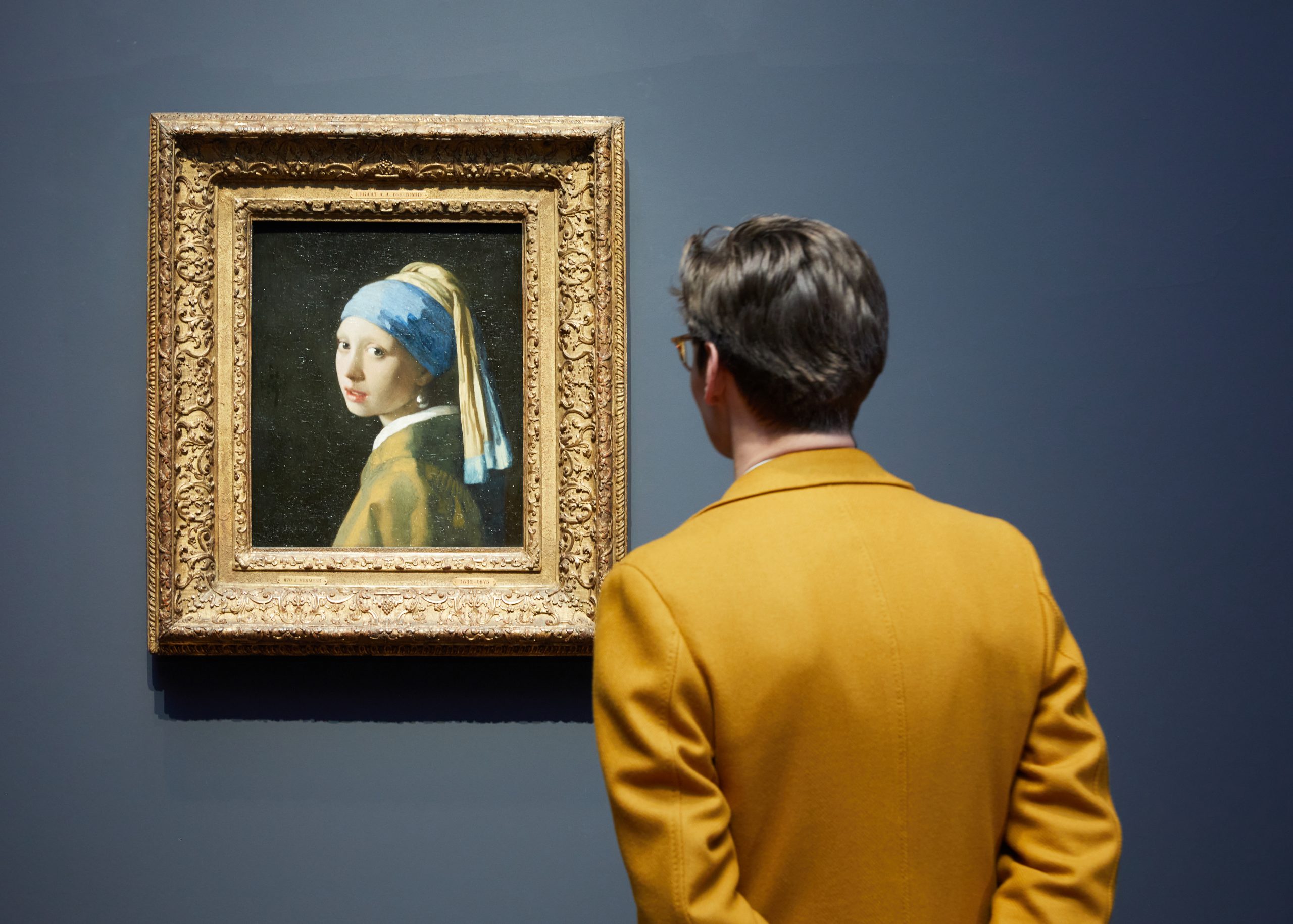Vermeer at the Rijksmuseum: 'As near as my life will come to finding a golden ticket to Willy Wonka's factory'
Country Life's John Goodall managed to get hold of a ticket to one of the most eagerly-anticipated art exhibitions in years: Vermeer at the Rijksmuseum in Amsterdam.


To have had the opportunity of visiting the current Vermeer exhibition in Amsterdam as part of the Pulitzer hotel's exclusive package with the Rijksmuseum — entirely sold out (for now, unless more tickets are released) — is as near as my life comes to the experience of finding a golden ticket to Willy Wonka's factory in one of his chocolate bars. And, to judge from the jealous reaction of family and friends to my good fortune, I'm not alone.
The journey to Amsterdam from London, on a direct train courtesy of Eurostar, was straight-forward and took just over four hours. With a minimum of possessions it was possible to cross the city centre from the station to the hotel on foot in about twenty minutes. On two consecutive mornings thereafter I ate a hearty early breakfast and walked from this central hotel along the line of one of the canals to the museum to this extraordinary, and massively over-subscribed, exhibition.

Presented in it are the vast majority of the paintings known to have been created by this exiguous, brilliant and relatively short-lived artist; to be precise 28 of his oeuvre of 37 known paintings (one of which was recently stolen and has not yet been recovered).
The nine rooms are thinly hung; some have only one painting in. That's fortunate because they fill up very quickly and the flood of visitors continues all day. As far as crowd management is concerned, it helps that interpretation panels are arranged at a distance from the paintings so there is less competition between those trying to learn and those trying to look.
Each work is also enclosed by a semi-circular rail that keeps the crowds away but allows for decent viewing at different angles as well.

The exhibition opens with Vermeer's only two known outdoors views and three of his early religious paintings. The latter are accomplished but a striking contrast to the atmospheric interiors with people that have made Vermeer famous and constitute the bulk of the display. It's fascinating to speculate on exactly how and why he passed from one mode to the other, though the crucial ligature is The Procuress (1656). His familiar paintings nearly all show their subjects tightly framed, most commonly in one corner of a room. Hangings are used in some images to crop the view yet further. The scene is always outwardly serene, an effect enhanced by Vermeer's evocation of light and colour.
What makes the images so compelling, however, is the way that each seems to incorporate the seeds of a narrative — a scrumpled letter on the floor, a smile or a wistful expression — but leaves it entirely to the viewer to piece together what is happening. It is as if we have stumbled on a scene of domestic life and, like a sleuth, must work out what is important and why.
Exquisite houses, the beauty of Nature, and how to get the most from your life, straight to your inbox.

Only in one of his later works, Allegory on the Catholic Faith (1671-4), (the exhibition convincingly emphasises Vermeer's probable Catholicism) is the symbolism more obvious and strident. A final room usefully summarises the story of the artist's life with an illustrated timeline of his work, including the handful of pictures that have not come to the exhibition.
If you get to the exhibition early there is plenty of time afterwards to explore the displays at the Rijksmuseum more generally. It's a splendid neo-Gothic building designed by Petrus Cuypers, also the designer of the very similar Central Station, and this year is the ninth anniversary of its re-opening after a decade-long remodelling project completed in 2013.
The display combines the fine and decorative arts and, whatever your interests, there is something here to enjoy from 18th-century lantern slides to objects traded by the vastly powerful Dutch East Indies Company. Dutch art from the 'Golden Age' is well represented of course and makes for interesting study after the Vermeer. Rembrant's Night Watch is currently in process of public conservation within a large, glazed enclosure.

The Pulitzer is otherwise well placed to explore Amsterdam. It stands in a quiet location on one of the concentric lines of canals that encircle the historic heart of the city, close to the Westerkerk and Anne Frank House, and comprises what were originally several historic merchant houses. The restaurant appears to be on a different street, but is actually connected to the rear across a garden courtyard.
The most important historic churches are now museums, including the New Church and Old Church. Walking into the former the visitor still feels transported into a 17th-century Dutch painting and the latter is worth visiting for its pulpit alone. Our Lord in the Attic, a 17th-century domestic catholic chapel, is well worth seeing as well, but the real surprise of my visit was to the Royal Palace, which was originally built in the 17th century as the town hall. It was a prodigy building of its age and at one remove helped shape the architecture of the Restoration and English Baroque.
Rooms at the Pulitzer start at €399 (about £351). Click here for more information.

John spent his childhood in Kenya, Germany, India and Yorkshire before joining Country Life in 2007, via the University of Durham. Known for his irrepressible love of castles and the Frozen soundtrack, and a laugh that lights up the lives of those around him, John also moonlights as a walking encyclopedia and is the author of several books.